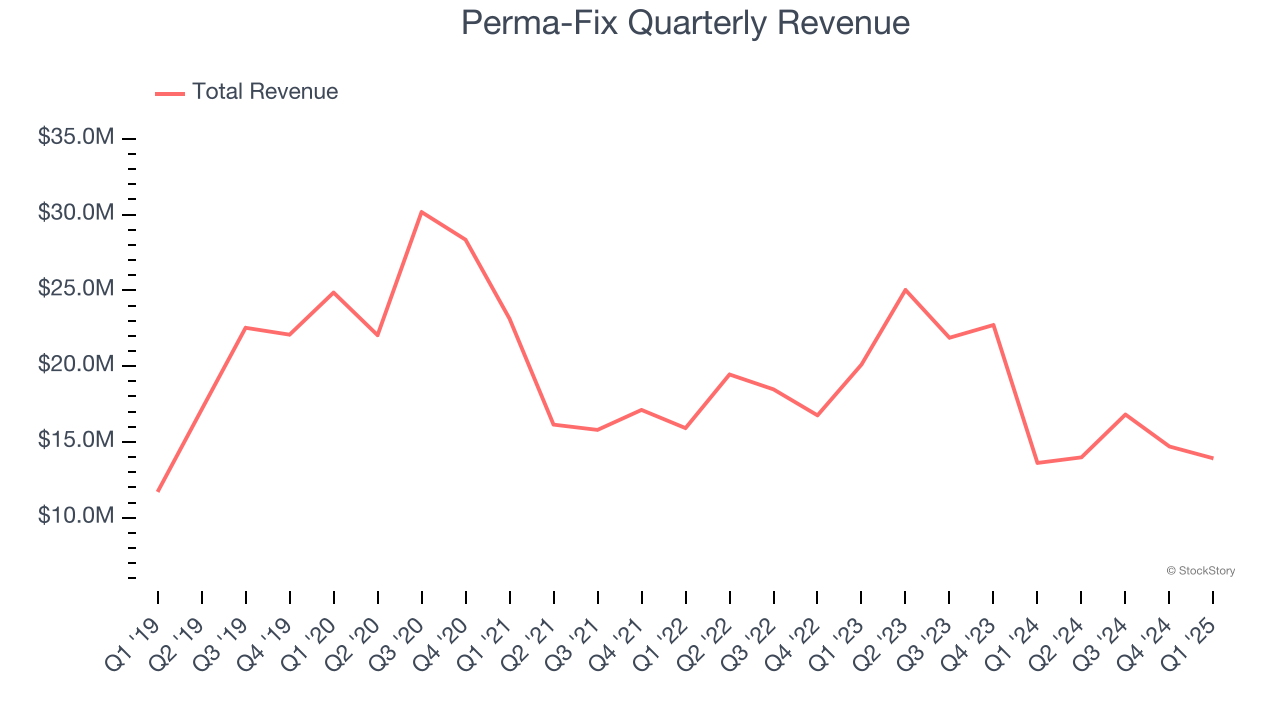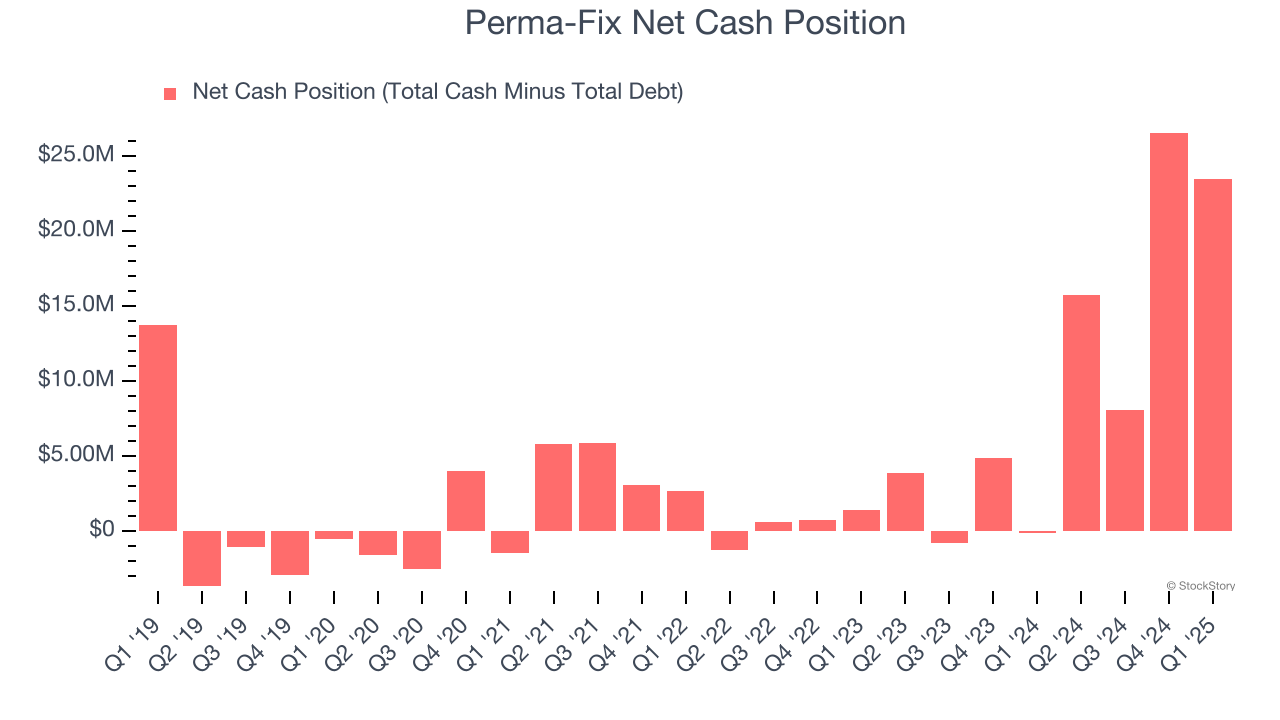
Over the last six months, Perma-Fix’s shares have sunk to $10.32, producing a disappointing 11.6% loss while the S&P 500 was flat. This was partly due to its softer quarterly results and may have investors wondering how to approach the situation.
Is there a buying opportunity in Perma-Fix, or does it present a risk to your portfolio? See what our analysts have to say in our full research report, it’s free.
Why Do We Think Perma-Fix Will Underperform?
Even though the stock has become cheaper, we're cautious about Perma-Fix. Here are three reasons why you should be careful with PESI and a stock we'd rather own.
1. Revenue Spiraling Downwards
A company’s long-term performance is an indicator of its overall quality. Any business can have short-term success, but a top-tier one grows for years. Over the last five years, Perma-Fix’s demand was weak and its revenue declined by 7.3% per year. This was below our standards and is a sign of poor business quality. 
2. New Investments Fail to Bear Fruit as ROIC Declines
ROIC, or return on invested capital, is a metric showing how much operating profit a company generates relative to the money it has raised (debt and equity).
We like to invest in businesses with high returns, but the trend in a company’s ROIC is what often surprises the market and moves the stock price. Unfortunately, Perma-Fix’s ROIC has decreased over the last few years. Paired with its already low returns, these declines suggest its profitable growth opportunities are few and far between.
3. Short Cash Runway Exposes Shareholders to Potential Dilution
As long-term investors, the risk we care about most is the permanent loss of capital, which can happen when a company goes bankrupt or raises money from a disadvantaged position. This is separate from short-term stock price volatility, something we are much less bothered by.
Perma-Fix burned through $15.94 million of cash over the last year. With $25.75 million of cash on its balance sheet, the company has around 19 months of runway left (assuming its $2.28 million of debt isn’t due right away).

Unless the Perma-Fix’s fundamentals change quickly, it might find itself in a position where it must raise capital from investors to continue operating. Whether that would be favorable is unclear because dilution is a headwind for shareholder returns.
We remain cautious of Perma-Fix until it generates consistent free cash flow or any of its announced financing plans materialize on its balance sheet.
Final Judgment
We cheer for all companies making their customers lives easier, but in the case of Perma-Fix, we’ll be cheering from the sidelines. After the recent drawdown, the stock trades at 95.3× forward EV-to-EBITDA (or $10.32 per share). This valuation tells us it’s a bit of a market darling with a lot of good news priced in - we think there are better investment opportunities out there. Let us point you toward the Amazon and PayPal of Latin America.
Stocks We Like More Than Perma-Fix
Market indices reached historic highs following Donald Trump’s presidential victory in November 2024, but the outlook for 2025 is clouded by new trade policies that could impact business confidence and growth.
While this has caused many investors to adopt a "fearful" wait-and-see approach, we’re leaning into our best ideas that can grow regardless of the political or macroeconomic climate. Take advantage of Mr. Market by checking out our Top 5 Growth Stocks for this month. This is a curated list of our High Quality stocks that have generated a market-beating return of 183% over the last five years (as of March 31st 2025).
Stocks that made our list in 2020 include now familiar names such as Nvidia (+1,545% between March 2020 and March 2025) as well as under-the-radar businesses like the once-micro-cap company Tecnoglass (+1,754% five-year return). Find your next big winner with StockStory today.
